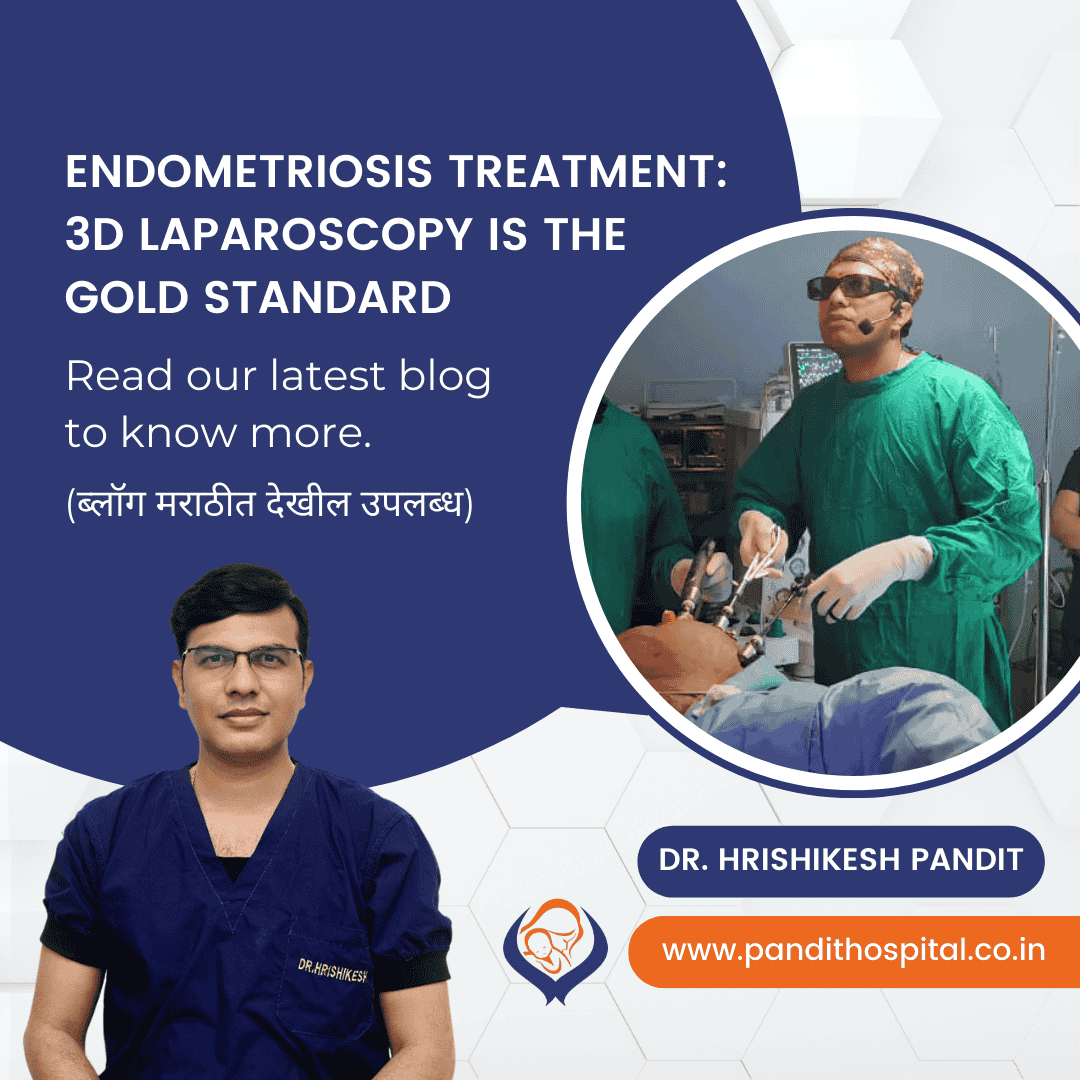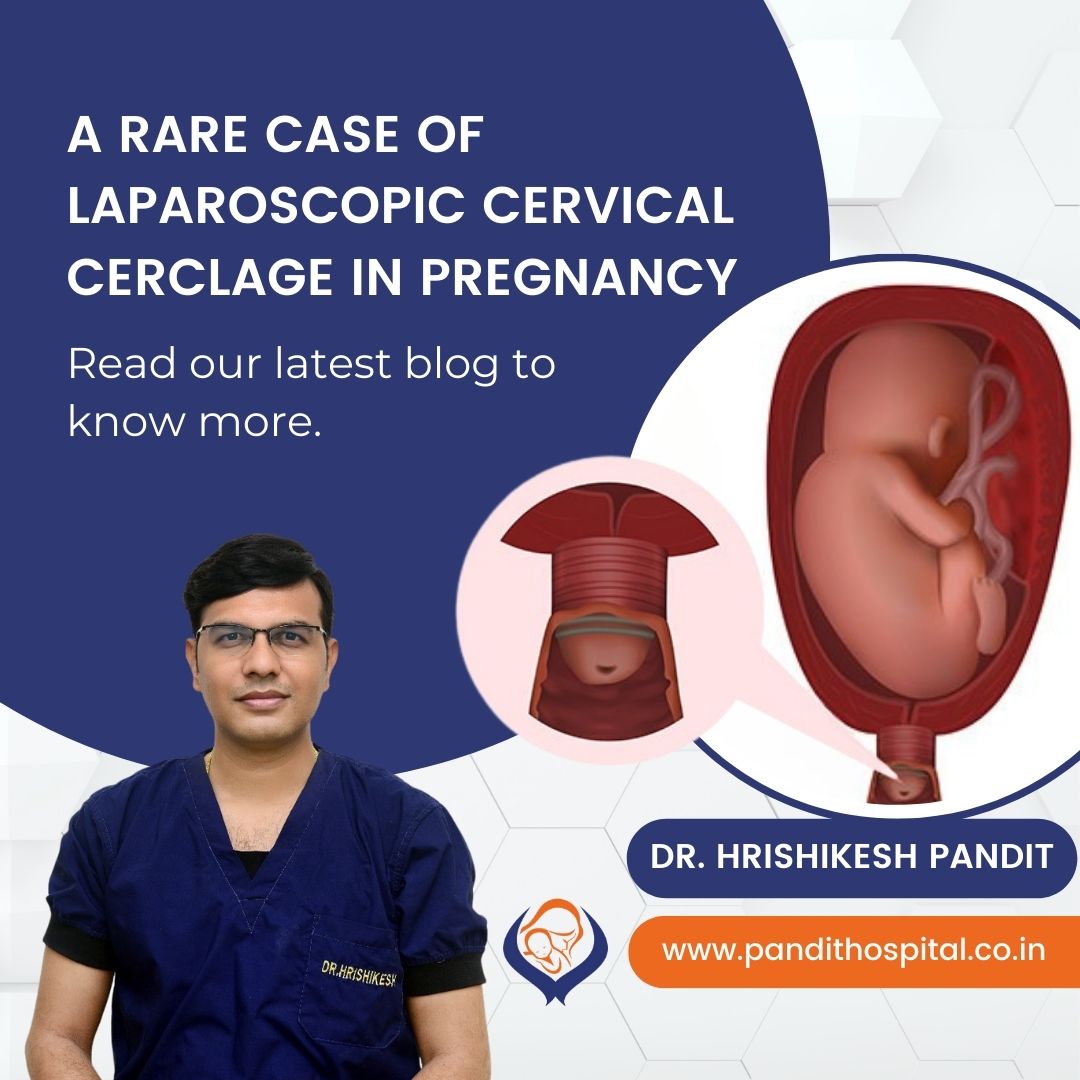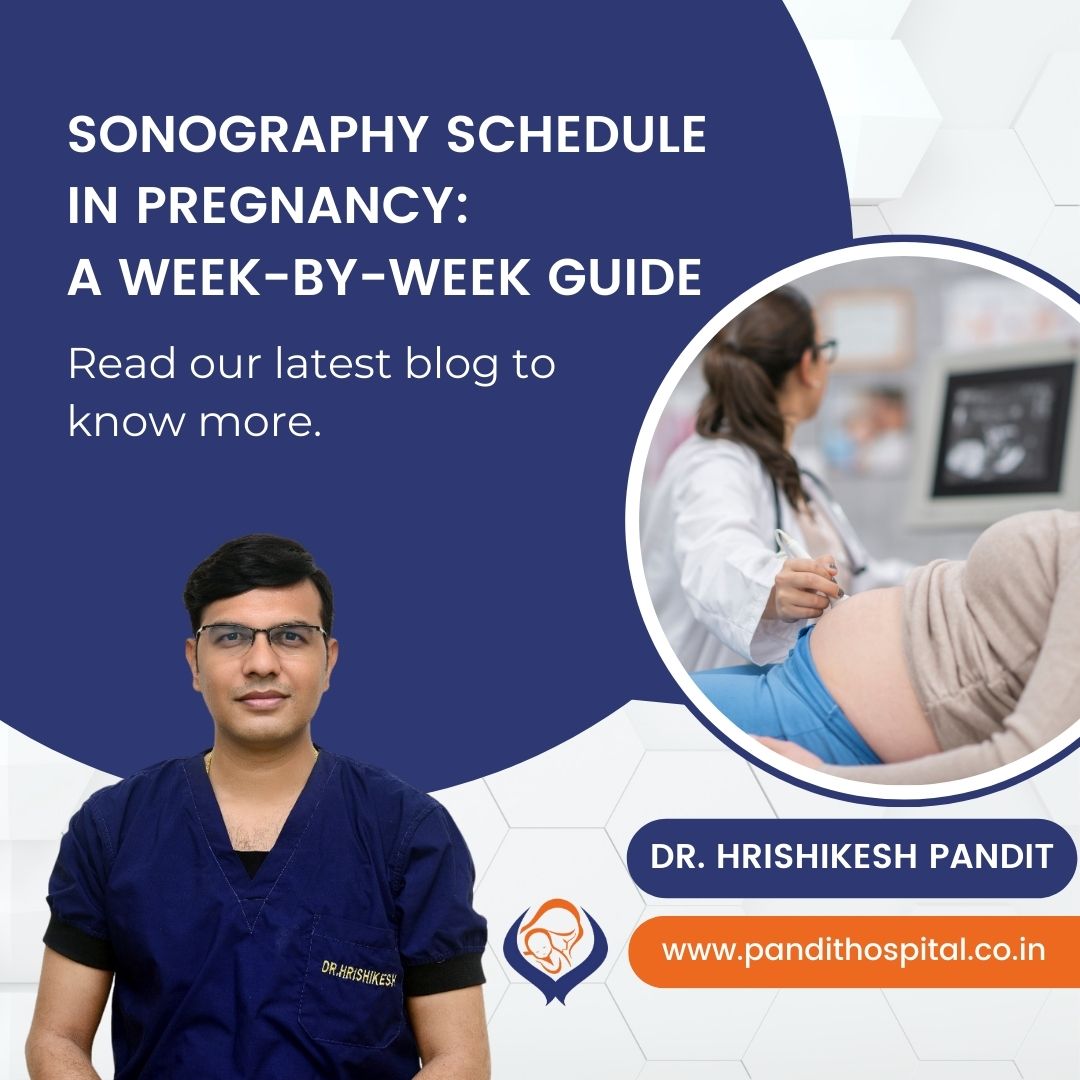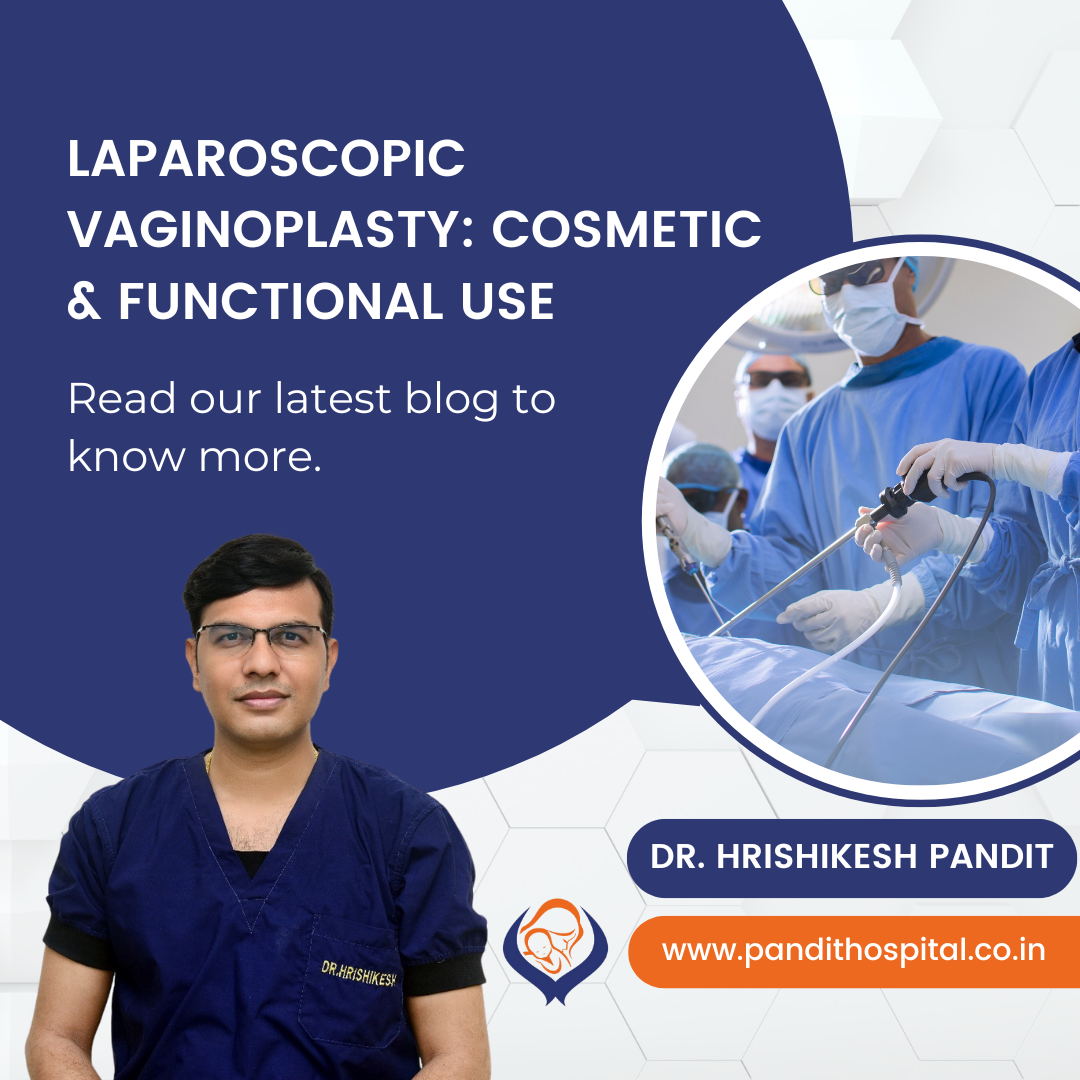Endometriosis is a complex gynecological condition that affects millions of women worldwide. With advancements in minimally invasive surgery, 3D laparoscopy has emerged as a revolutionary technique for treating endometriosis. Dr. Hrishikesh Pandit, a renowned laparoscopic gynecologist in Ahmednagar, Maharashtra, and one of India’s foremost experts in endometriosis treatment, answers common questions about how 3D laparoscopy makes a difference.
Read this blog in Marathi
Endometriosis occurs when tissue similar to the lining inside the uterus (endometrium) grows outside the uterus, causing pain, inflammation, and sometimes infertility. While medical management such as hormonal therapy can help alleviate symptoms, surgery is often required to remove endometrial implants and adhesions, especially in moderate to severe cases.
Traditional laparoscopy uses a 2D camera to provide a visual of the surgical area, but it lacks depth perception. 3D laparoscopy, on the other hand, uses a high-definition 3D camera that gives the surgeon a more detailed, realistic view. This enables enhanced depth perception, which is crucial when performing intricate surgeries like endometriosis excision.
The precision offered by 3D laparoscopy allows the surgeon to differentiate between healthy and diseased tissue more clearly, leading to more accurate removal of endometriotic lesions.
Recurrence of endometriosis is a common concern. One reason for recurrence is incomplete removal of endometriotic lesions during surgery. With 2D laparoscopy, the surgeon might miss small or deeply infiltrating lesions due to limited visibility. 3D laparoscopy offers a magnified and more detailed view of the pelvic anatomy, enabling the surgeon to meticulously remove all visible lesions.
By ensuring a more thorough removal of the endometriotic tissue, 3D laparoscopy significantly reduces the chances of recurrence. This is one of the key reasons why it is gaining popularity for the treatment of endometriosis.
The benefits of 3D laparoscopy over traditional methods include:
- Improved Accuracy: The 3D view allows for more precise dissection of tissues, reducing the likelihood of damaging surrounding structures.
- Better Outcome in Severe Cases: For cases with deep infiltrating endometriosis, which can involve organs like the bladder or bowel, 3D laparoscopy provides the clarity needed to manage these complex conditions without complications.
- Faster Recovery: As a minimally invasive technique, 3D laparoscopy typically results in less postoperative pain, shorter hospital stays, and quicker recovery compared to open surgery.
- Lower Risk of Complications: The enhanced visualization reduces the risk of accidental damage to nearby organs and blood vessels, leading to safer outcomes.
Yes, it can. Endometriosis is a leading cause of infertility, and removing endometrial lesions is often necessary to improve fertility. With 3D laparoscopy, we are able to thoroughly remove endometriotic tissue while preserving as much healthy ovarian and uterine tissue as possible. This is especially important for women who wish to conceive naturally after surgery. By reducing the extent of tissue damage and enhancing the precision of the excision, 3D laparoscopy can improve fertility outcomes significantly.
Most women diagnosed with endometriosis, especially those with moderate to severe cases or who experience chronic pain or infertility, can benefit from 3D laparoscopy. It is particularly useful for women who have had previous surgeries with persistent symptoms or those who have deep infiltrating endometriosis. However, the decision to proceed with 3D laparoscopy should be individualized based on the patient’s symptoms, the extent of the disease, and their reproductive goals.
The recovery process following 3D laparoscopy is generally quicker and less painful than after traditional open surgery or even 2D laparoscopy. Most patients can return to their normal activities within a week or two, depending on the severity of the disease and the extent of the surgery. The smaller incisions also reduce the risk of infection and result in minimal scarring.
3D laparoscopy has truly transformed how we approach endometriosis in India, especially in complex cases where traditional methods may not provide adequate results. At Pandit Hospital in Ahmednagar, Maharashtra, we are proud to be pioneers in offering this advanced technology. Patients from across the country and even internationally seek this treatment due to its proven success in minimizing recurrence and improving quality of life.
My advice is to seek help as soon as you notice persistent pelvic pain, painful periods, or difficulty in conceiving. Endometriosis is a progressive condition, and timely intervention is crucial. With the advanced techniques available today, like 3D laparoscopy, we can manage the condition effectively and help you lead a pain-free, fulfilling life.
Dr. Hrishikesh Pandit’s expertise in 3D laparoscopy offers a new hope to women suffering from endometriosis. With the potential to significantly reduce recurrence rates and improve fertility, 3D laparoscopy is an invaluable tool in the hands of a skilled surgeon like Dr. Pandit. If you’re experiencing symptoms of endometriosis or seeking advanced surgical care, consulting with Dr. Pandit at Pandit Hospital, Ahmednagar, could be a life-changing decision.
With his expertise in endoscopic gynecology and the state-of-the-art facilities at Pandit Hospital, you can trust that you’re in the best hands. Don’t hesitate to reach out to Pandit Hospital to schedule a consultation and take the first step toward better reproductive health.
At Pandit Hospital, you are in safe hands!
To consult Dr. Hrishikesh Pandit, Click Below,
Pandit Hospital – Best Maternity care center in Ahmednagar
LET’S SEE OUR INTRO VIDEO
At Pandit Hospital, we provide all the maternity services from antenatal to postnatal period under one roof
Let's Connect!!
0241-2441717 / 0241-2442344
About author:
Dr. Hrishikesh Pandit:
Dr. Hrishikesh Pandit is one of the best obstetrician and gynecologist in India. He is also a well-renowned Laparoscopic surgeon. He obtained his MS (Ob Gyn) degree from the prestigious Pravara Institute of Medical Sciences. He has also done fellowship and diploma courses in laparoscopic surgeries and cancer treatment from Tata Hospital and Keil University, Germany. His surgical cases, papers and videos has been chosen in many international forums of gynecology.
At Pandit Hospital, we are always working hard to provide its patients with the highest level of medical innovation and patient care. With the aim of delivering complete maternity & gynecological care under one roof with the help of all contemporary amenities and cutting-edge medical equipment. Dr. Hrishikesh Pandit has a vision to bring the best of facilities regarding laparoscopy surgeries in the city of Ahmednagar. He is the pioneer of 3D Laparoscopy technology is Ahmednagar.
Latest Articles
Dr. Hrishikesh Pandit is one of the best laparoscopy surgeons in India. His determination to bring 3D Laparoscopy technology to Ahmednagar has eventually helped so many patients. Read the latest articles by Dr. Hrishikesh Pandit on Gynecology, gastric issues, and health tips for mothers during pregnancy.
Laparoscopic Cerclage is done for cervical insufficiency or early abortion history. Consult Dr. Hrishikesh Pandit to know more about it. Excellent results in High Risk Pregnancies. Watch video on YouTube.
At Pandit Hospital, Ahilyanagar, we provide advanced maternity care with state-of-the-art 3D laparoscopy and sonography services to ensure the safety of both mother and baby.
Pandit Hospital, led by Dr. Hrishikesh Pandit, offers 3D laparoscopic treatments including Laparoscopic Vaginoplasty, to restore both form and function in women seeking vaginal reconstruction in india.
FAQ
You should consult a doctor during the first 6 to 8 weeks of your pregnancy, or when your period is 2 to 4 weeks late.
If your contractions are 5 minutes apart, lasting for 1 minute, for 1 hour or longer, it’s time to head to the hospital.
Doctors recommend an infertility evaluation if you have not gotten pregnant after 1 year of having regular sexual intercourse without using birth control. If you are older than 35, an evaluation is recommended after 6 months of trying.
Yes, You can. But most babies need 39 weeks to develop fully. Induced or planned delivery before that time—without a valid medical reason—is not in the best interest of the baby or the mother. After 39 weeks you can plan delivery.
Women who are 21 to 29 should have a Pap test alone every 3 years. HPV testing alone can be considered for women who are 25 to 29, but Pap tests are preferred. Women who are 30 to 65 have three options for testing. They can have a Pap test and an HPV test (co-testing) every 5 years. They can have a Pap test alone every 3 years. Or they can have HPV testing alone every 5 years.
Laparoscopic hysterectomy is a safe and suitable procedure for chosen patients. It affords patients advantages like less peri-operative morbidity, better life quality, shorter hospitalization time, and faster return to activity.
Schedule a doctor’s visit if you have: Greenish, yellowish, thick or cheesy vaginal discharge; Strong vaginal odor; Redness, itching, burning or irritation of your vagina or the area of skin that surrounds the vagina and urethra (vulva); Bleeding or spotting unrelated to your period.
Painless delivery can be achieved using a form of regional anesthesia that provides pain relief during natural labor. Epidural anesthesia is administered through an injection on the lower back of the mother. The drug takes about 10-15 minutes to take effect.
Even in severe cases of endometriosis, most can be treated with laparoscopic surgery. In laparoscopic surgery, your surgeon inserts a slender viewing instrument (laparoscope) through a small incision near your navel and inserts instruments to remove endometrial tissue through another small incision.
The HPV vaccine is recommended for routine vaccination at the age of 11 or 12 years. (Vaccination can be started at age 9.) It is also recommended that vaccination for everyone through age 26 years if not adequately vaccinated when younger. HPV vaccination is given as a series of either two or three doses, depending on age at initial vaccination.





